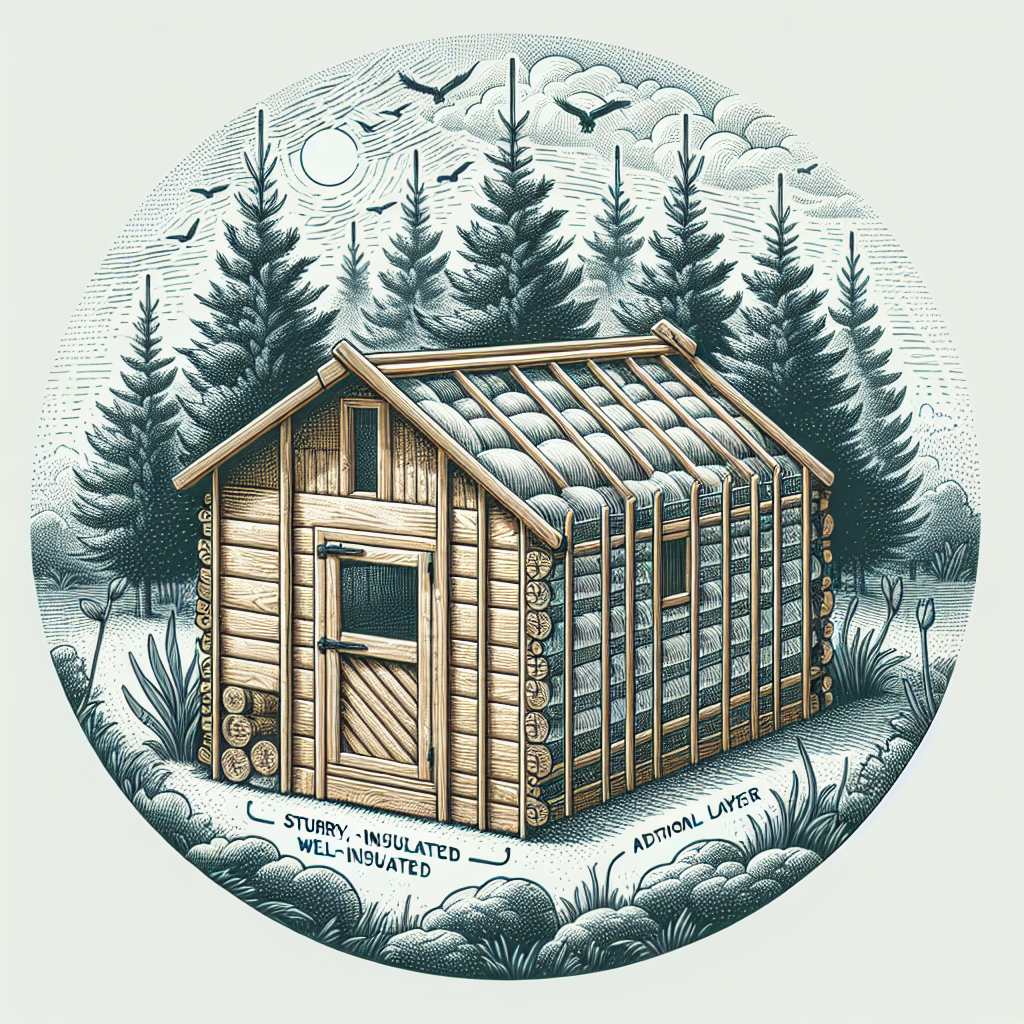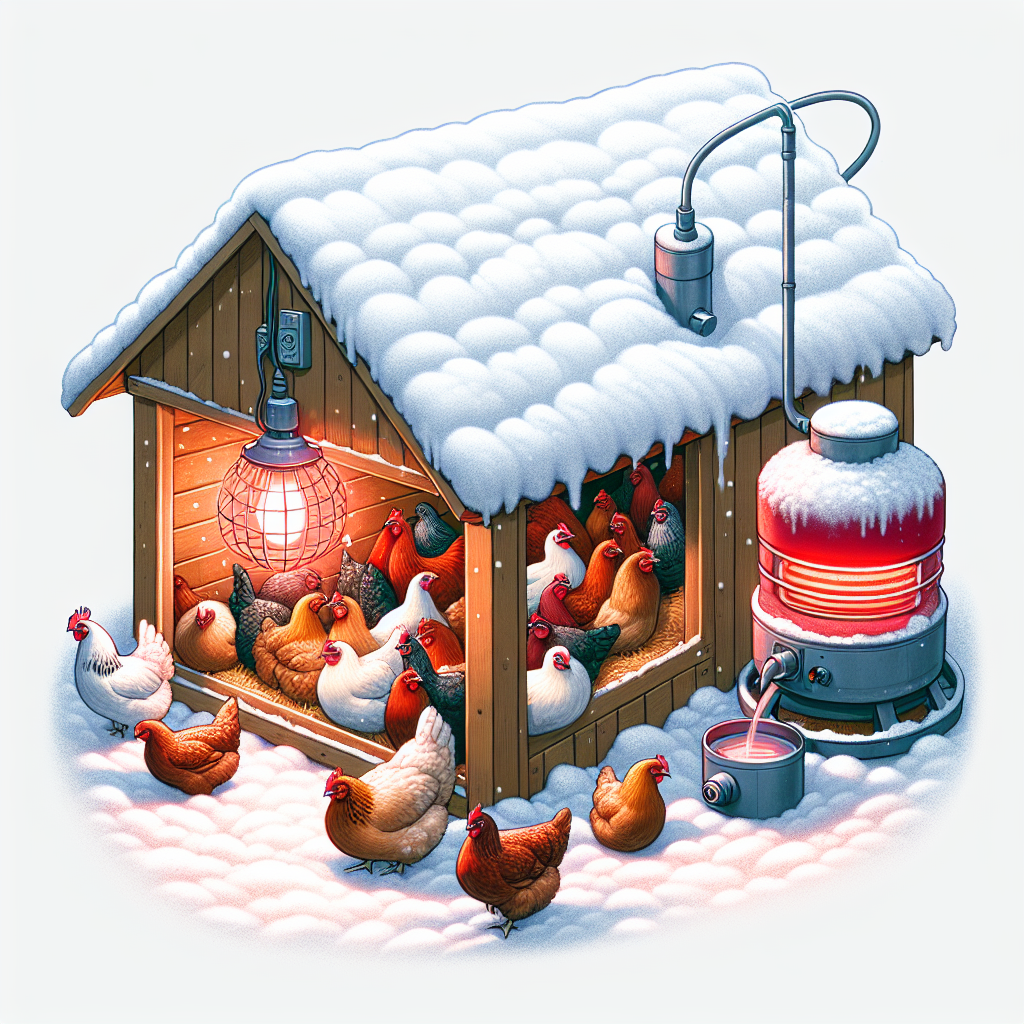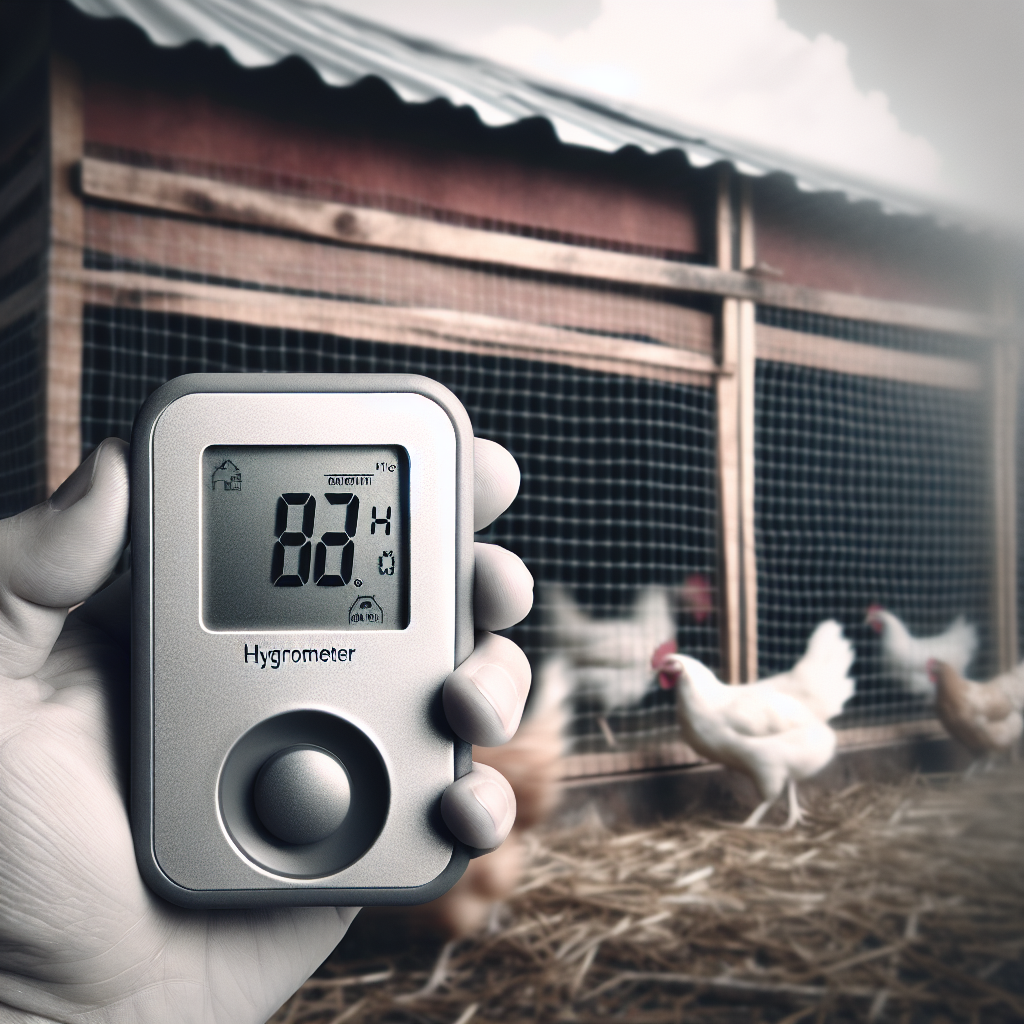Imagine the fierce winter storms blowing through, bringing biting winds and icy rain. In the midst of this harsh weather, your beloved chickens are left exposed and vulnerable. But fear not, for there is a solution that will keep your feathered friends safe and cozy. By creating a windbreak or sheltered space for your chickens, you can provide them with the protection they need to weather the storms. In this article, we will explore some practical strategies and tips to help you create the perfect winter refuge for your chickens, ensuring their well-being and comfort all season long.
Building a Solid Structure for Wind Protection
Building a solid structure for wind protection is essential in ensuring the well-being of your chickens during winter storms. Choosing a suitable location is the first step in creating a safe environment for your flock. Look for an area that is sheltered from strong winds and provides natural barriers such as trees or buildings. This will help to minimize the impact of harsh winds on your chickens.
Next, it is important to choose a suitable structure that can withstand strong winds. A sturdy coop made of durable materials is highly recommended. Ensure that the coop is properly insulated to keep your chickens warm and protected from the cold. Insulation can help to retain heat and prevent drafts, creating a comfortable environment for your feathered friends.
Utilizing Natural Windbreaks
Nature provides us with many natural windbreaks that can be utilized to protect your chickens from winter storms. Existing landscape features such as hills or mounds can offer natural barriers against strong winds. Place your chicken coop near these features to take advantage of their wind-blocking properties.
Additionally, planting trees and shrubs strategically around your coop can provide extra protection from the wind. Evergreen trees, in particular, are great options as they can act as a wind barrier year-round. Make sure to choose trees that are suited to your specific climate and will not obstruct sunlight from reaching the coop.
If you need a temporary solution, you can create wind barriers by using materials such as plastic sheeting or tarps. These can be attached to stakes and positioned in areas where the wind is strongest. This will create a barrier and redirect the wind away from your chicken coop.
Structural Modifications to Existing Shelter
If you already have a chicken coop but it lacks sufficient wind protection, there are several modifications you can make to enhance its structural integrity. Adding additional layers to the walls of your coop can help to provide extra insulation and block out drafts. Consider using materials such as plywood or insulation boards to reinforce the walls.
Another option is to install windbreak screens on the sides of the coop. These screens are designed to reduce wind velocity and create a more sheltered environment. They can be easily attached to the sides of the coop and provide a barrier against strong winds while still allowing airflow.
Sealing cracks and gaps in your coop is also important to prevent drafts. Inspect the coop for any openings where cold air could enter and use caulking or weatherstripping to seal them. By creating a draft-free environment, you are ensuring that your chickens are protected from the chilling effects of winter winds.
Providing Indoor Comfort for Chickens
During winter storms, it is crucial to provide your chickens with a comfortable and warm indoor environment. Installing heaters or heat lamps in the coop can help to maintain a suitable temperature. Make sure to follow safety guidelines when using heating equipment and keep in mind the risk of fire hazards.
The deep litter method is another effective way to keep your chickens warm. This method involves adding layers of straw, wood shavings, or other organic materials to the floor of the coop. As the bedding decomposes, it generates heat, providing natural insulation for your chickens. Regularly turning the litter will promote airflow and prevent ammonia buildup.
Proper ventilation is also essential for the health of your flock. While it may seem counterintuitive, ensuring good airflow helps to remove moisture and prevent condensation, which can lead to respiratory issues. Install vents near the top of the coop to let out stale air, while making sure they are protected from drafts.
Ensuring Outdoor Comfort for Chickens
While indoor comfort is important, it is also crucial to provide outdoor areas for your chickens to stretch their wings and get fresh air. However, during winter storms, it is necessary to take measures to protect them from harsh weather conditions.
One option is to cover the outdoor run with a waterproof tarp or plastic sheeting. This will shield your chickens from rain and snow while still allowing them access to the outdoors. Make sure to secure the cover tightly to prevent it from being blown away by strong winds.
Building a covered walkway between the coop and the outdoor run is another way to provide protection. This walkway acts as a windbreak and allows your chickens to move freely without being exposed to the full force of the wind. Consider using materials such as plywood or corrugated plastic for the roof of the walkway.
Chickens naturally prefer to roost elevated off the ground, so providing elevated perches in the outdoor area can help them stay dry and avoid standing in puddles. Use sturdy materials such as wooden planks or branches and ensure that the perches are wide enough for your chickens to comfortably perch on.
Feeding and Watering Considerations
During winter storms, it is important to ensure that your chickens have access to fresh water at all times. Freezing temperatures can cause waterers to ice over, leaving your flock without a vital source of hydration. To prevent this, consider using heated waterers that are specifically designed for cold weather conditions. These waterers have built-in heaters to keep the water from freezing.
Placing feeders in sheltered areas is also beneficial during winter storms. Position them near windbreaks or inside the coop to prevent feed from getting wet and spoiling. Keeping the feeders protected from the elements will ensure that your chickens have access to nutritious food throughout the stormy weather.
Protection from Snow and Ice
Snow and ice can pose challenges for your chickens during winter storms. It is important to take measures to keep their environment safe and free from hazards.
Regularly clearing snow and ice from pathways is crucial to prevent slips and falls. Use a shovel or snow blower to clear a path to the coop and outdoor run. This will provide safe access for both you and your chickens, reducing the risk of injuries.
Keep the entrances to the coop and run clear of snow and ice. This will allow your chickens to freely enter and exit the sheltered areas without obstruction. Clearing the entrances also prevents the buildup of snow or ice, which could block ventilation or compromise the structural integrity of the coop.
To provide traction on slippery surfaces, spread sand or straw on pathways and around the coop and run. This will help prevent your chickens from slipping and injuring themselves. Regularly replenish the sand or straw, especially after heavy snowfall or ice accumulation.
Monitoring and Adjusting for Ideal Conditions
Monitoring temperature and humidity levels inside the coop is essential for creating ideal conditions for your chickens during winter storms. Regularly check the temperature using a thermometer and ensure that it remains within a suitable range for your flock. Adjust heating equipment if necessary to maintain a comfortable temperature.
Humidity levels should also be monitored to prevent excessive moisture buildup, which can lead to respiratory issues. Use a hygrometer to measure humidity levels and make adjustments accordingly. Proper ventilation, as mentioned earlier, plays a significant role in maintaining optimal humidity levels.
Stay informed about upcoming weather changes and make adjustments to your chickens’ environment accordingly. If a storm is approaching, consider temporarily increasing the heat in the coop or providing extra bedding for warmth. Being proactive in responding to changing weather conditions will help keep your chickens safe and comfortable.
Regularly inspecting and maintaining the shelter is essential for the long-term well-being of your flock. Check for any signs of wear and tear, such as loose boards or damaged roofing, and repair them promptly. Keeping the shelter in good condition will ensure that it continues to provide adequate protection from winter storms.
Preparing for Emergency Situations
In the event of an emergency situation, it is important to have a plan in place to ensure the safety of your chickens. Create an emergency plan that outlines the steps to take during severe weather conditions. This may include bringing your chickens indoors or taking additional measures to secure the coop.
Stock up on essential supplies to be prepared for emergencies. This includes extra food and water, first aid supplies, and any necessary medications. Having these supplies readily available will save valuable time and ensure that your chickens’ needs are met during challenging times.
It is important to know when to bring your chickens indoors during severe winter storms. If the weather conditions become extremely dangerous, such as during blizzards or freezing rain, it is best to move your flock to a secure indoor location. This could be a garage, basement, or any other suitable area where they can be kept warm and protected.
Ensuring Health and Well-being
Maintaining the health and well-being of your chickens during winter storms is crucial. Regularly inspect your chickens for any signs of distress, such as lethargy, decreased appetite, or respiratory issues. If you notice any unusual behavior or symptoms, consult a veterinarian promptly.
Providing extra bedding in the coop is a simple way to enhance warmth and comfort for your chickens. Increase the thickness of the bedding during winter storms to provide extra insulation. Materials such as straw, wood shavings, or dried leaves can be used to create a cozy and warm environment for your flock.
Enhancing the diet of your chickens with nutritious treats can also boost their overall health. During winter storms, when they may not have access to fresh greens or insects, adding treats such as mealworms or fruits to their diet can provide essential nutrients and mental stimulation.
With proper planning and preparation, you can create a windbreak or sheltered space for your chickens during winter storms. By implementing these strategies and making adjustments based on weather conditions, you can ensure that your flock remains safe, comfortable, and healthy throughout the winter season. Building a solid structure, utilizing natural windbreaks, and providing the necessary amenities will go a long way in protecting your chickens from the harsh elements. Remember, a little extra effort in winter can make all the difference in keeping your chickens happy and thriving.




